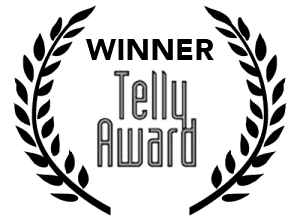What’s your favorite color?
Studies say, it’s probably blue. The color blue evokes a sense of calm, of steadiness, of peace. And, it’s the most universally liked color.
Whether blue is your favorite color or not, color psychology affects your brand marketing strategy more than you think.
We’re going to talk about what the psychology of color is and how you can use it strategically in your video marketing content.

What is color psychology?
Color psychology is the study of how humans react to various colors, their hues, shades, and pigments. It’s about how color can influence human behavior, attitude, and mood, even subtly.
Just think about it. Why do you purchase one shirt versus another? What does your desktop background look like? Where do you like to hang out in your home?
Chances are, color has something to do with it. It affects our emotions and our energy. We know that our surroundings affect us, that’s why we spend thousands of dollars each year on home decor and finding the perfect throw pillow.
Some of us spend years deciding (and never committing) to a perfect wall color.
So, why would we think that color doesn’t play an integral role in our branding and our business?

So, how does color psychology interplay with video content marketing?
You can use color psychology to build a desired perception for your brand. It’s another tool to influence behavior and cultivate a certain attitude toward your brand.
Colors act as a nonverbal form of persuasion. They can powerfully evoke particular emotions and make us think in certain perspectives.
We asked our editor, Taylor Stoma, how he uses the principles of color psychology when working in post-production.
“For our clients, the reason they come to us is to relay an intention–a call to action or a message. One of the ways we can instill that intention outside of music, pace, and graphics, is color; whether it be a branding method, purely for aesthetic purposes, or an element on it’s own, without which the story would not make sense. Color is one of the first things that registers in the viewer’s mind, consciously or subconsciously. And, a great example of this, would be to create a soft, less contrasted, and warm (highlighting more-so reds, yellows, grays and whites) tone to create a dreamy or nostalgic look.”
If you don’t consider color psychology, you’re not only missing out on a great way to shape your brand, but you’re also potentially misleading your audience.
Color is another visual factor that functions as an identifier for your brand. If not carefully crafted, your audience can get the wrong idea, dislike your brand representations, or ignore you altogether!
If you want to be strategic, you have to learn how it works.

Does it really work?
Yes. And no.
Color psychology is not a hard science, and the research is still growing and evolving.
In short, it works together with its surrounding context.
“Color in psychology is subjective, and it can be based on personal history, cultural influences, and even personal preference. That being said, it’s likely that you have a similar cultural background with your audience, so you’ll be able to best understand how they’ll interpret it” (Gotter 2018).
That’s not to say there aren’t general assumptions you can make about segments of people and their connotation of color. But, you do need to consider cultural, economic, and social context for their experience with that color.
“Always consider your target market before choosing a color scheme. Do those people have frequent experience with a particular color? If so, is that association helpful or harmful?”
From there, we can certainly draw correlations from patterns we see in marketing campaigns and consumer behaviors.










